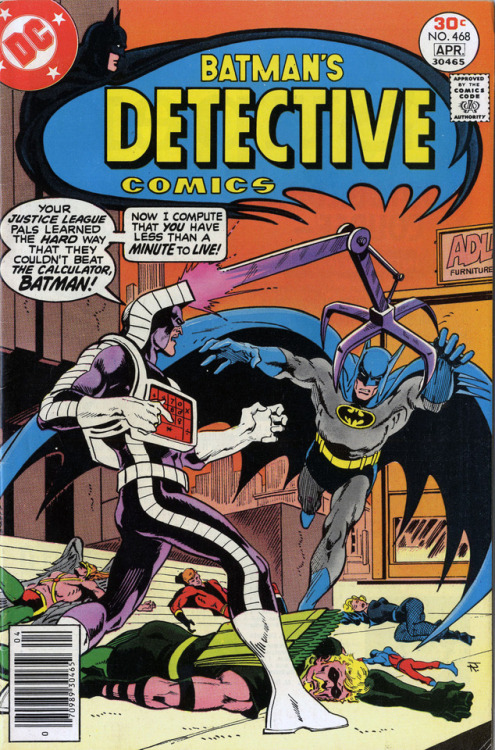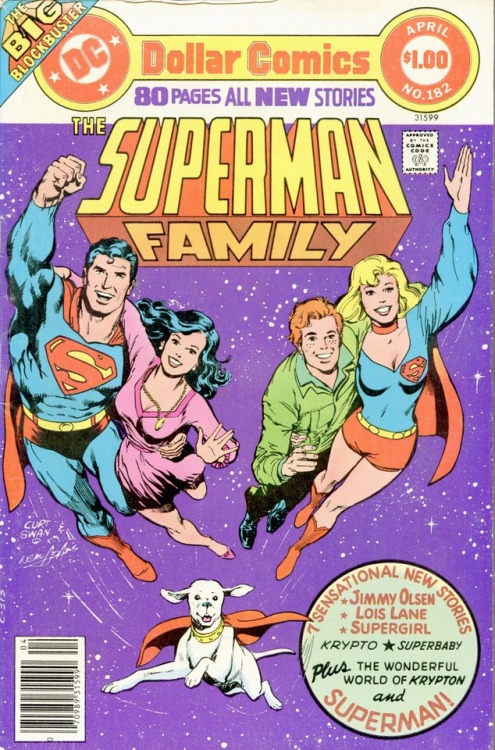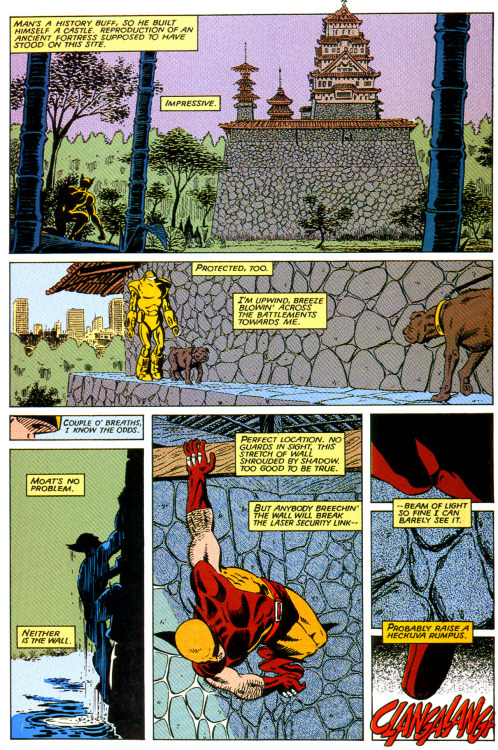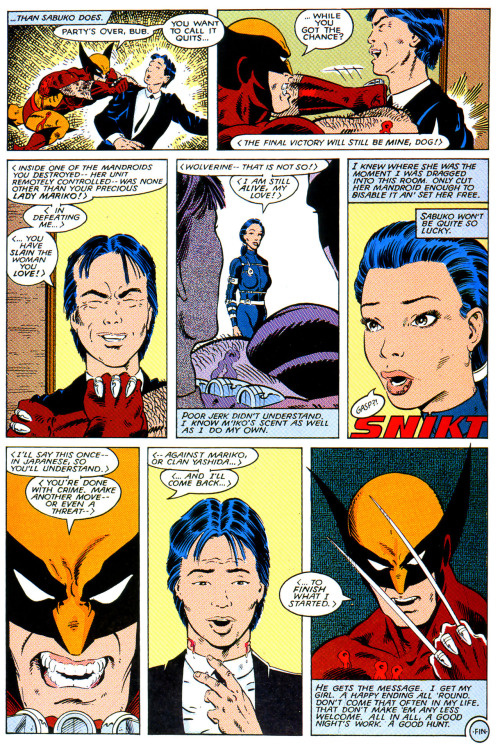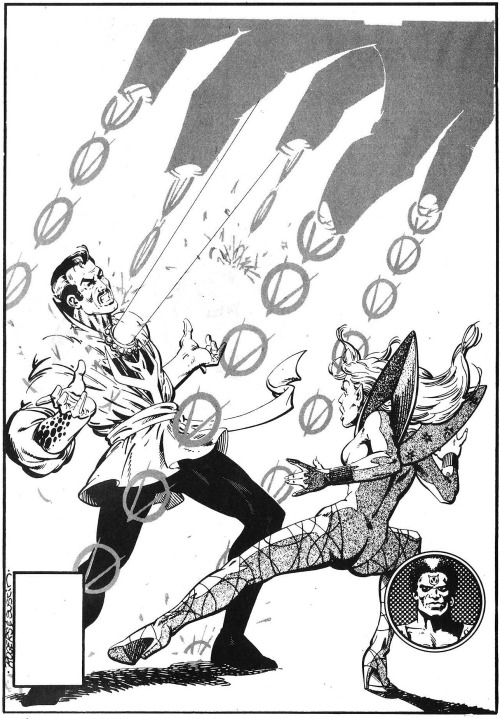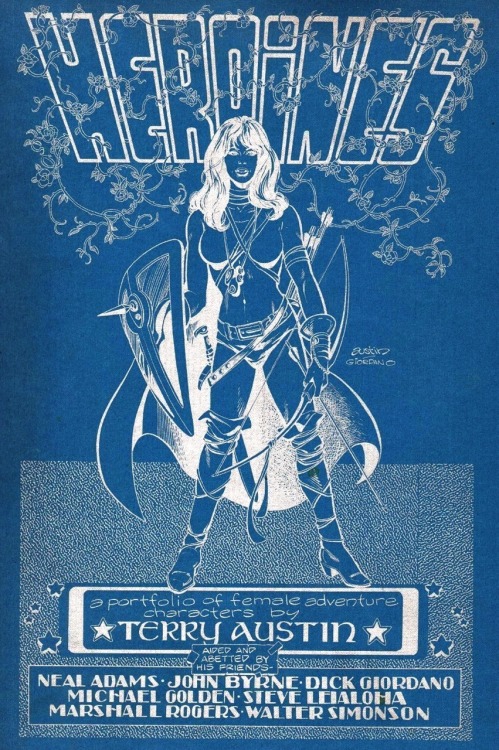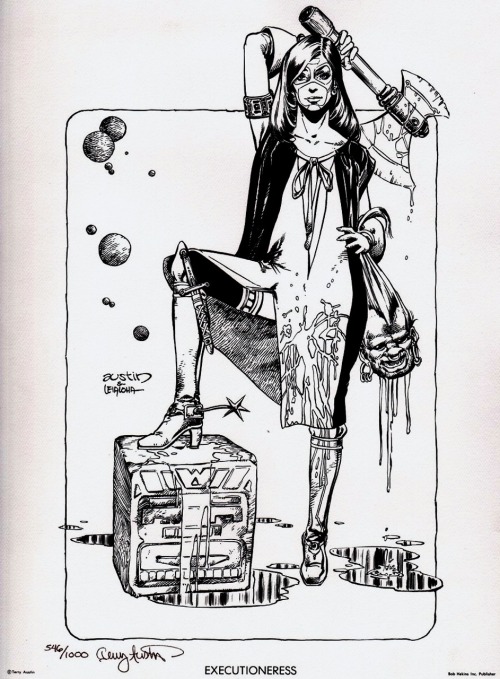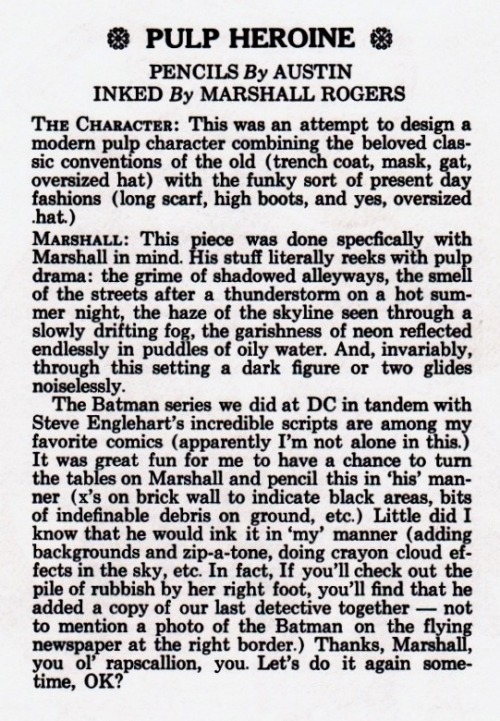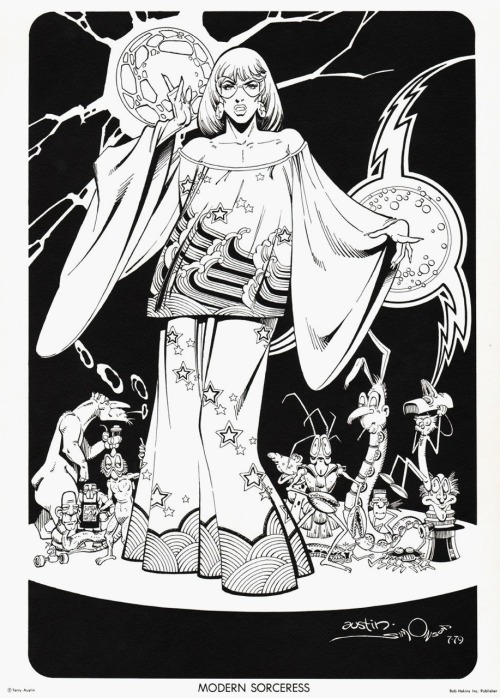#marshall rogers
The next issue of DETECTIVE COMICS wrapped up the saga of the Calculator, which had been winding through the assorted back-up stories for several months. And it looked more like a Justice League adventure than a strictly Batman one, so I bought a copy.

The story goes that editor Julie Schwartz took a lot of crap from high-ranking folks at DC for allowing Marshall Rogers to illustrate the whole book. They didn’t feel as though he was ready for such an assignment, that he drew too weird–weird mainly being in reference to his proclivity for page layouts that weren’t strictly in grid format. But the reader response to the issue was extremely strong, and so Julie’s decision was ultimately vindicated.

In fairness to the nay-sayers, Marshall does often cheat his backgrounds, and he moves his camera into some strange positions. But it’s all exciting, electrifying–it’s the most modern-looking DC comic book in years, and an outlier tot he visual revolution to come, when creators such as Perez, Golden, Arthur Adams, Todd McFarlane and even Rob Liefeld will ultimately move the medium. Marshall doesn’t care that Batman’s cloak, the way he draws it, it far too long to be practical, what he cares about is that it looks cool–and it does!

As the wrap-up to a long serial, this issue is actually incredibly straightforward. It opens with Batman already in pitched conflict with the Calculator. As in previous installments, the Calculator is defeated by Batman, but not before he can strike his special key, thus immunizing himself in some unspecified manner against the Caped Crusader in the future. A few days later, the Calculator has broken jail and has been spotted in Central City, no doubt looking for the Flash to continue his plan. The JLA responds in force…

But try tough they might, this particular sextet of Justice Leaguers can’t lay a finger on the Calculator–all of their attacks boomerang back upon them. The Atom even tries switching to his civilian identity of Ray Palmer, hoping that the immunization won’t register against him in that form–but no dice, the Calculator leaves Batman and the JLA strewn in his wake as he calmly strolls away.

It’s a frustrated Batman who goes back to work as Bruce Wayne, who is in the midst of a key deal with Metropolis’s Morgan Edge. As they converse about the deal and the lengths to which Edge has gone to set it up, Wayne gets a brainstorm as to how to defeat the Calculator and rushes off. Meanwhile, the Calculator’s attention has been drawn by news of a time capsule being installed at STAR Labs, which he figures is the perfect target to draw out the Flash.

But Batman is waiting for him there–and so begins a personal duel between the Dark Knight and the Calculator of Crime. No matter what Batman throws against him, the Calculator’s computer always has the perfect counter-move ready. But when the Calculator attempts to trap Batman in an escape-proof cage, Batman triggers his trump card, a turntable which rotates the floor of the room such that the Calculator is caught in his own trap. As he tries to extricate himself from captivity, the strain causes the Calculator’s systems to overload and explode.

Which had been the Batman’s plan all along–he’d set it up ahead of time, and then egged the Calculator on by using phrases such as lock-up and behind bars to subtly influence him into creating a cage or prison for Batman that he could be switched into at the last moment. So yes, it’s a very simple story with a very simple resolution, but it’s really Marshall Rogers’ art (backed up by inker Terry Austin) that makes it noteworthy.
Post link
I bought this issue of SUPERMAN FAMILY at a supermarket of all places–a clear sign of the aggressiveness with which new DC publisher Jeanette Kahn was pushing her new initiative. Having come to the conclusion that one of the things that was causing the comic book business such ills was that the books weren’t as profitable for mainstream retailers as “real magazines”, Kahn initiated the Dollar Comics program: four titles would be converted into 80-page all-new releases priced at a dollar rather than thirty cents. This would generate better profit-per-unit for retailers and perhaps get the product into more outlets.
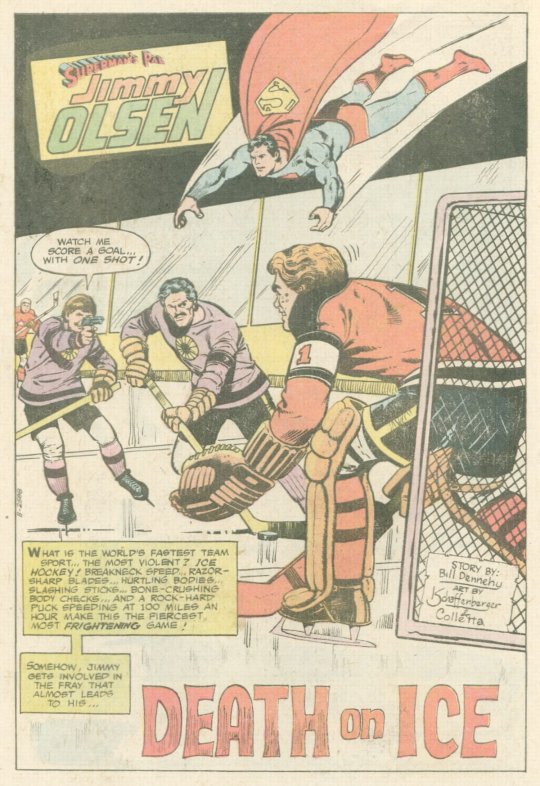
SUPERMAN FAMILY was the first of these books that I encountered–the others to make the shift to the Dollar Comic format at this time were WORLD’S FINEST, G.I. COMBAT and HOUSE OF MYSTERY–so two super hero titles, a war book and a weird mystery title, covering multiple genres to see what stuck. All of the books were anthologies, which helped with generating this much material on a monthly basis but which also made them all, in essence, less-than-essential buys. You could read SUPERMAN or BATMAN just fine if you avoided the Dollar Comics, for instance. I’m sure some of the thinking going into these choices involved not wanting to monkey around with the company’s true money-makers by converting them to an unproven format.

The Dollar Comics initiative lasted for a little over five years, though in that time, as you’d expect, the size of the books dwindled a bit, and the initial ads-free approach was eventually dropped. I don’t know that it had much of an impact one way or the other–certainly, none of the initial Dollar Comics titles was cancelled, at least not for that reason. But once they stopped being new, I don’t know that they opened up as many doors as Kahn had been hoping. Still, it was a worthy experiment.

If I had to pick one word to describe this inaugural edition of the Dollar Comics SUPERMAN FAMILY, it would be “nice”. All of the stories in it are competently done by seasoned professionals, they’re all well-constructed yarns. But none of them are particularly exciting or engaging or memorable–and, in fact, I didn’t remember a one of them until I cracked this book open again to write up this piece. They all represented five minutes of disposable entertainment, to be read and discarded without another thought.

There were seven stories in total in this issue, covering the length and breadth of the Superman line of characters, but focusing on the three series–JIMMY OLSEN, LOIS LANE and SUPERGIRL–which had been the backbone of SUPERMAN FAMILY for it’s run up to this point. In the opening Jimmy Olsen tale, the red-headed “Mr. Action” investigates shady goings-on in the world of Ice Hockey, with some assistance from the Man of Steel. The Superbaby tale that follows it up is about the infant from Krypton adopting an alien pet, who turns out to be a stranded alien pilot.
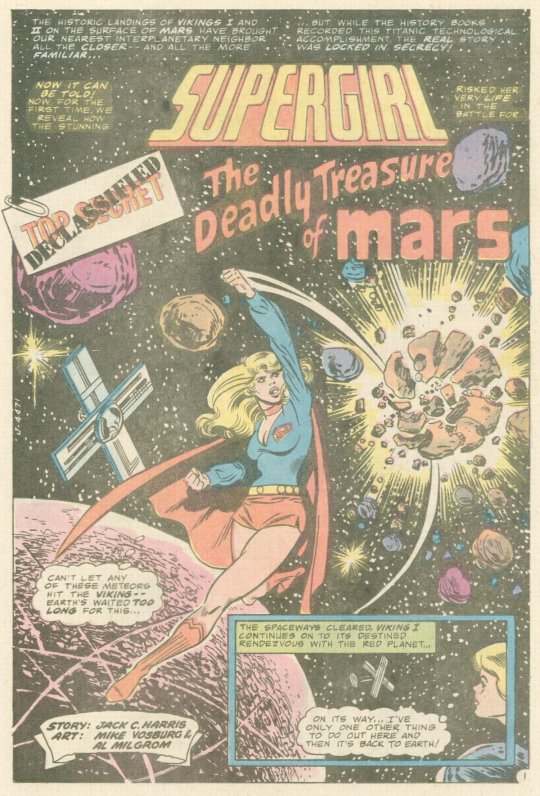
The third piece is a Lois Lane story that’s very similar to the Jimmy Olsen opener, except that Lois is investigating the world of professional wrestling. Superman is largely absent in this one, but he does appear for a panel or so at the end to wrap everything up. The next story is probably the one that took the greatest attempt to have substance, aided by the always-interesting artwork of a young Marshall Rogers. It’s a Fabulous World of Krypton outing that details that planet’s equivalent of the Christmas holiday, a celebration of the pacifist Jo-Mon whose death by violence brought about Krypton’s first lasting peace. It’s an obvious allegory, but it’s presented with sincerity and heart.

Next came a full-length Supergirl story nicely illustrated by Mike Vosburg, in which the Maid of Might engages in a rare battle with her cousin’s arch-enemy Lex Luthor. Luthor is after a sample of Kryptonite which rests on the surface of Mars–this was during that time period where all of the Kryptonite on Earth had been transmuted into lead, so the stuff was a bit more rare. And it’s a fake anyway, a ruse by Supergirl to draw out Luthor. That’s followed up with a light Krypto story in which the flying canine first emasculates and then restores the confidence of a protective junkyard hound. Truly these were life-and-death stakes.

The book closes on another Jimmy Olsen story, in which the reporter is gifted with telepathy by an imperiled mentalist and has to come to his aid. Once again, it’s Superman who does most of the heavy lifting here. So it was a nice, think package, of the sort that always appealed to me as a kid. And yet, I found it unfulfilling–there wasn’t anything in the issue that I found especially memorable, which was almost never the case in a comic book this large. So it would be a while before I sampled another issue of SUPERMAN FAMILY.
Post link
Wolverine “The Hunter” by Chris Claremont & Marshall Rogers.
The story originally appeared in The Best of Marvel Comics (1987), a Sears exclusive collection. It was reprinted in Les Daniels’ Marvel: Five Fabulous Decades of the World’s Greatest Comics (1991). According to Daniels, it was written to be a “Wolverine 101″ story.
Post link
Doctor Strange #48, August 1981, pencils by Marshall Rogers and inks byTerry Austin.
“Playing with Overlays” feature from The Comics Journal #65, August 1981.
Post link
Terry Austin ~ the Heroines Portfolio. All the pencilling was done by Terry Austin, with a different inker for each plate.
In the order I posted them:
-Cover Art: Inks by Dick Giordano
-Executioneress: Inks by Steve Leialoha
-Pulp Heroine: Inks by Marshall Rogers
-Space Rangerette: Inks by John Byrne
-Modern Sorceress: Inks by Walt Simonson
-Superhero’s Girlfriend: Inks by Michael Golden
Post link

What If: Fantastic Four #1, February 2006, written by Mike Carey, penciled by Marshall Rogers

